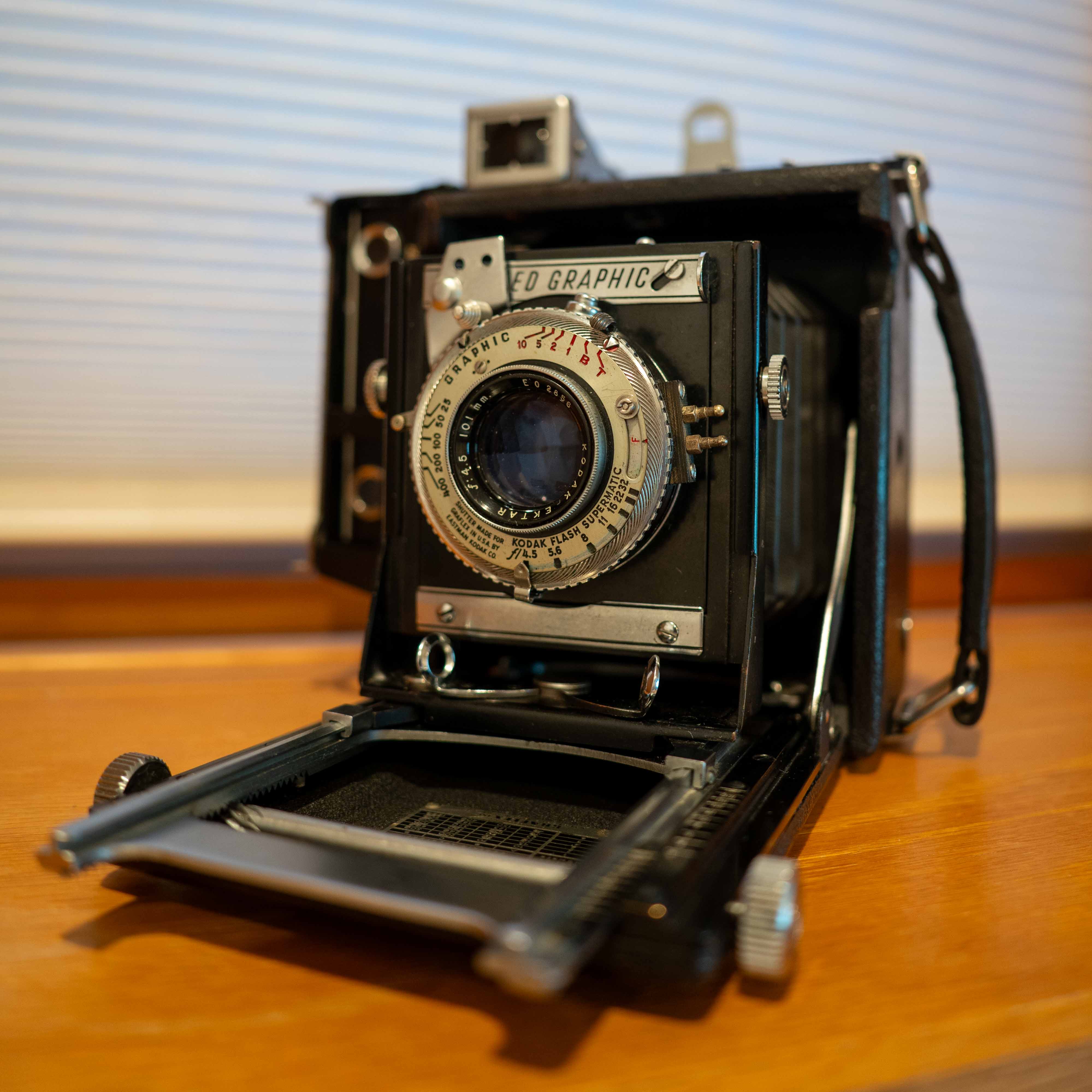
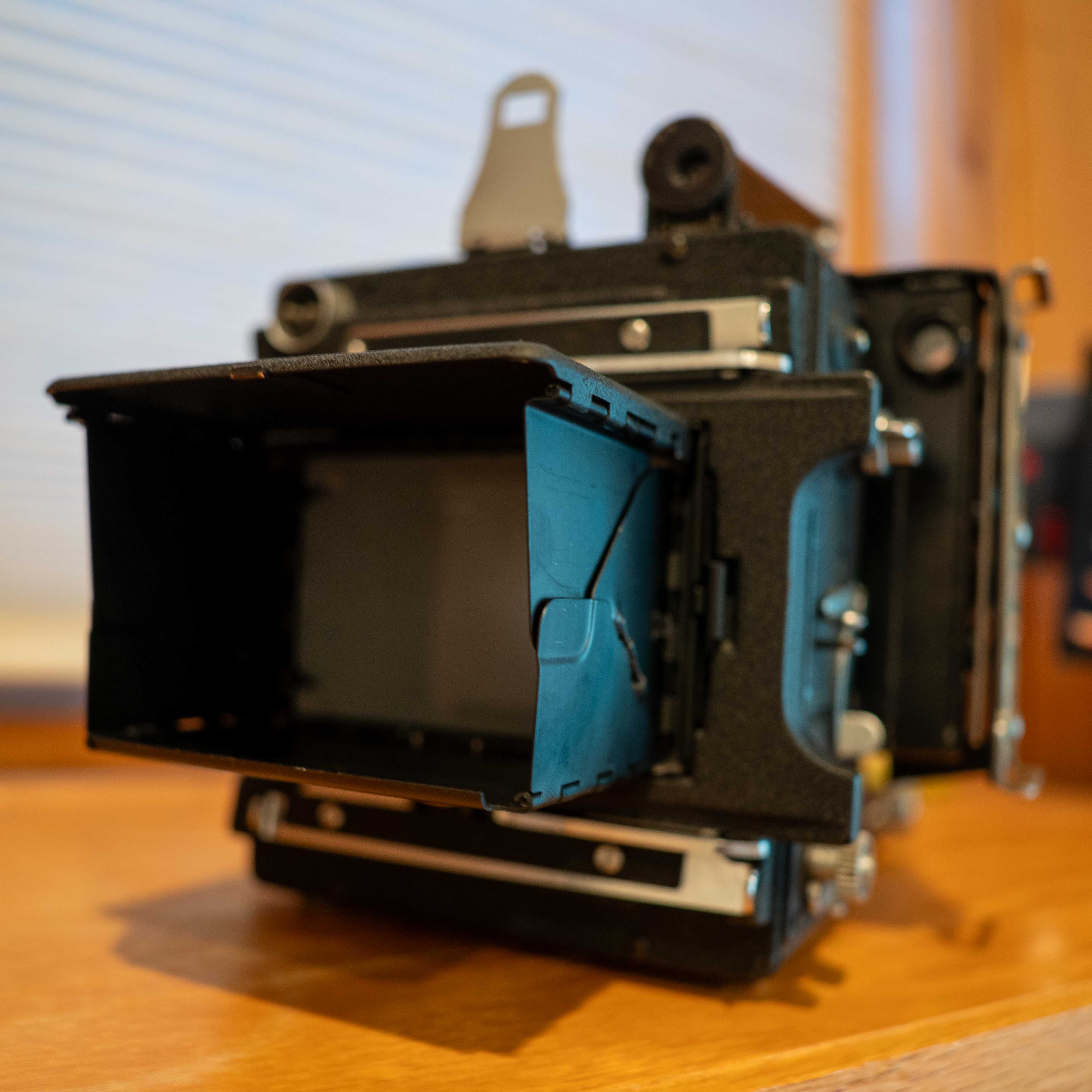
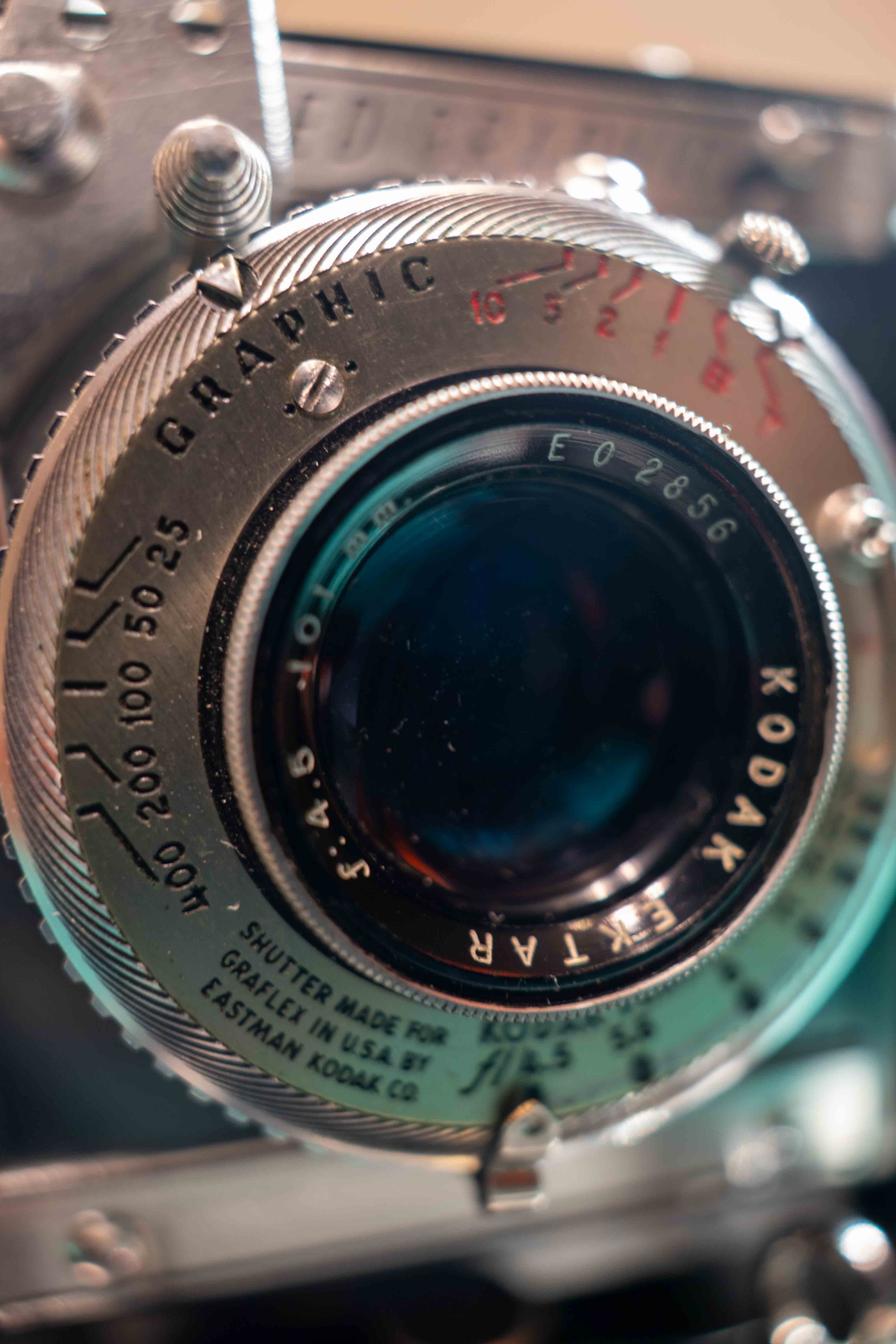
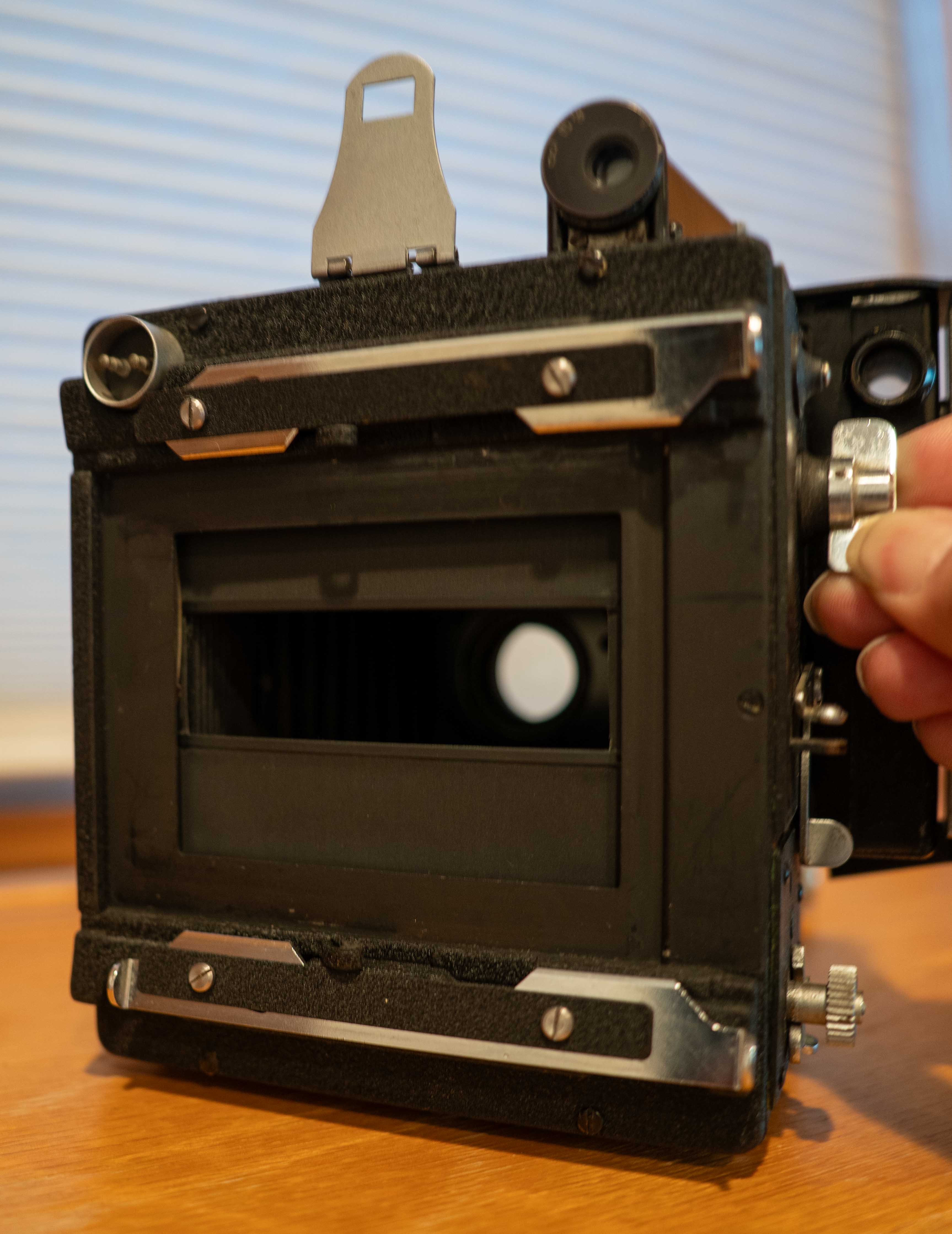
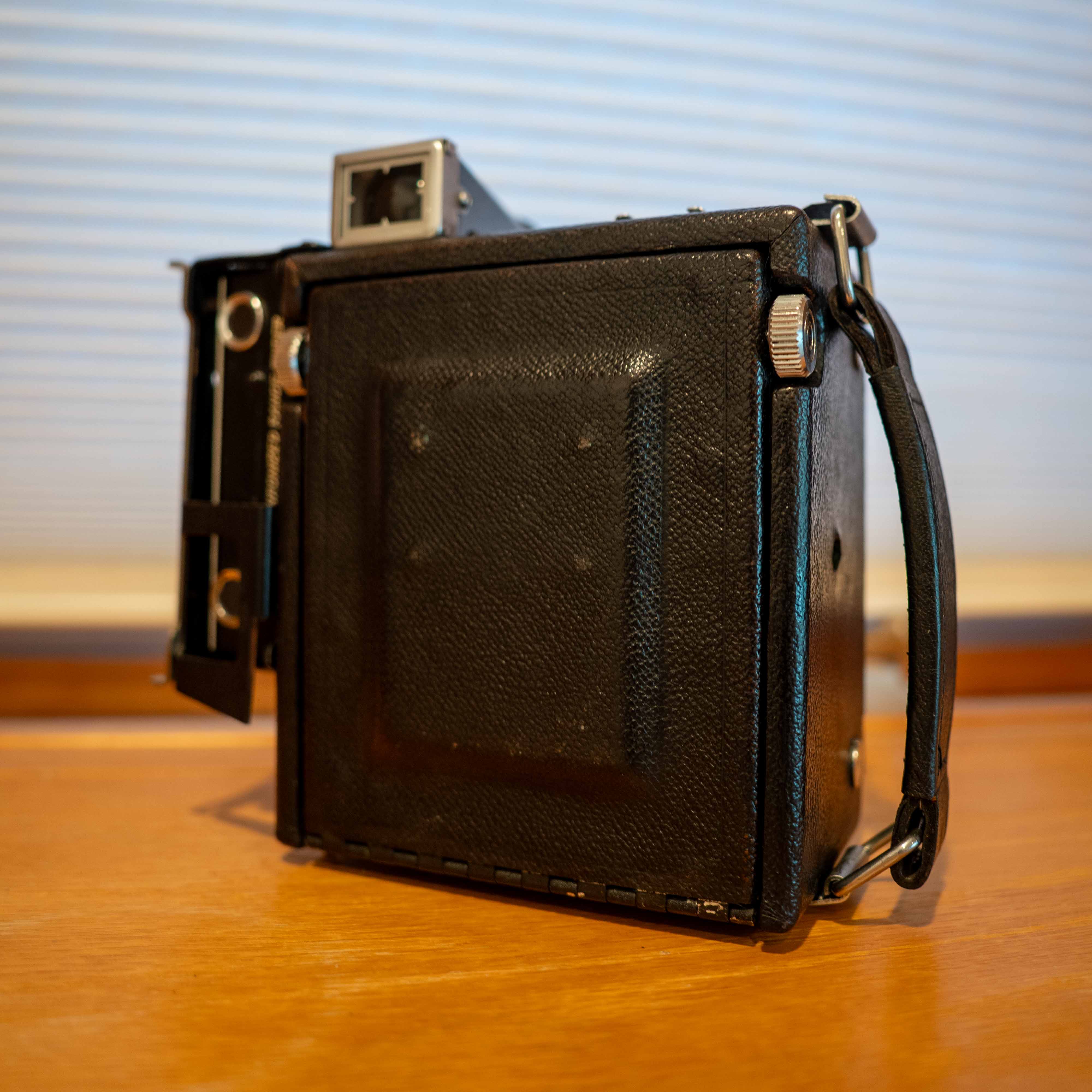
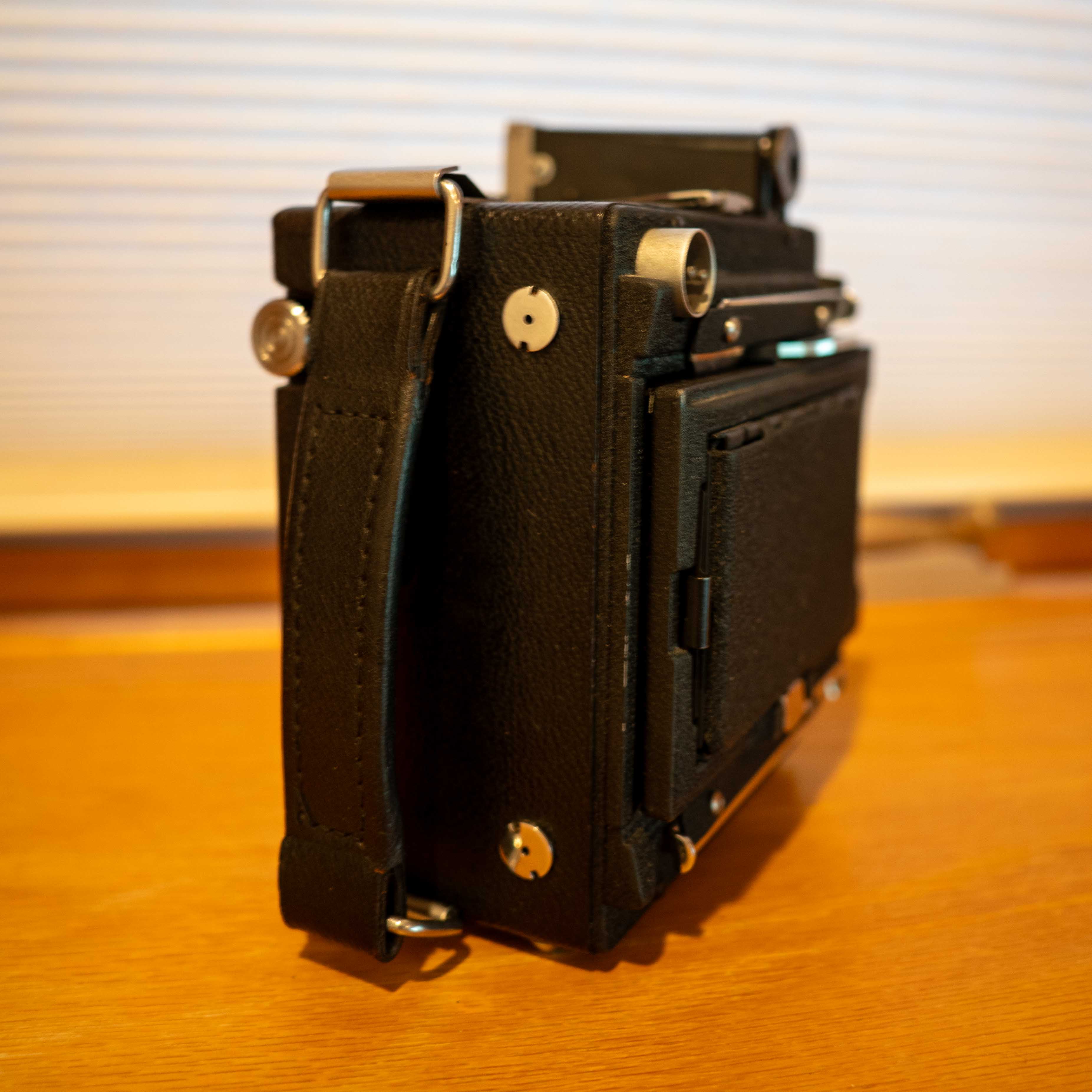
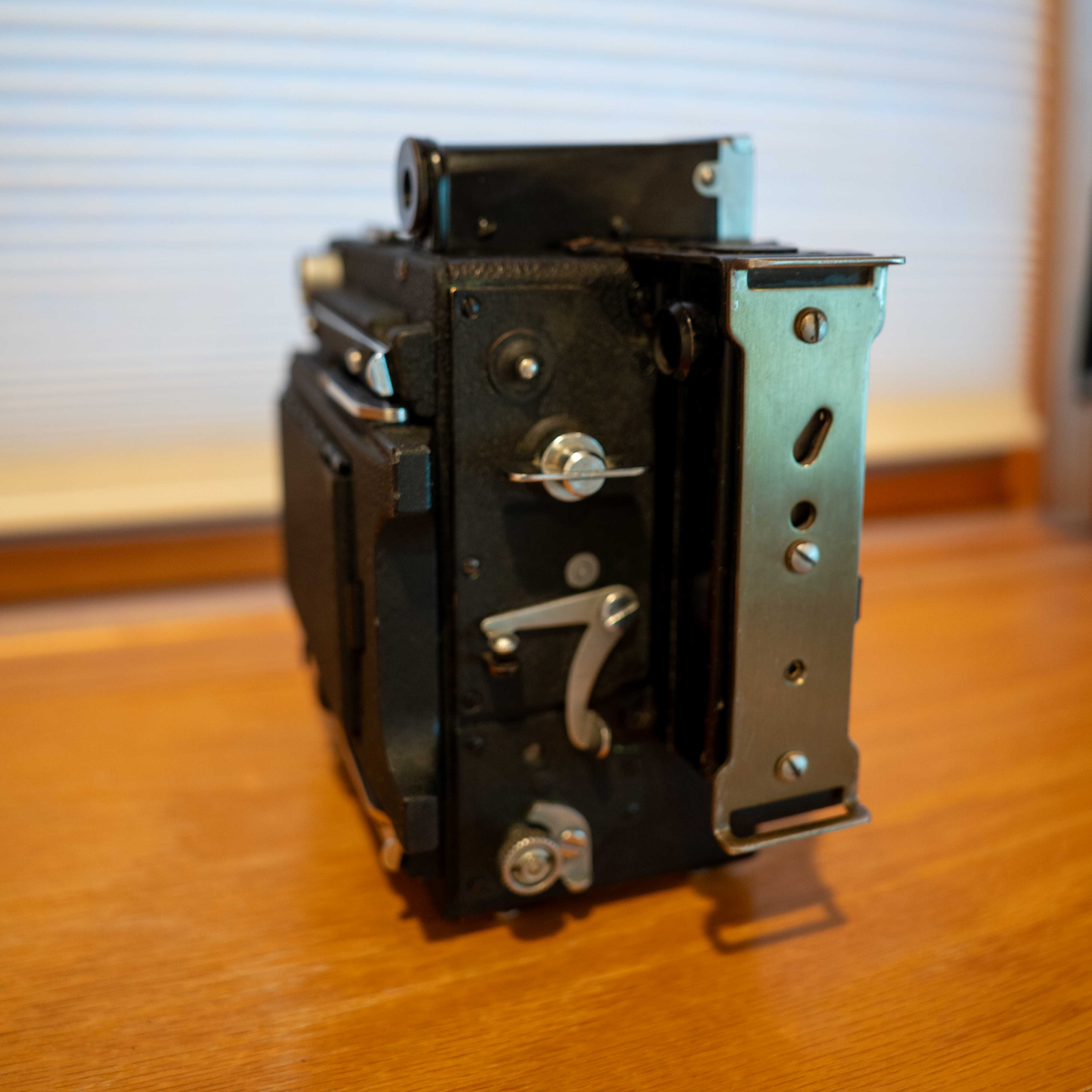
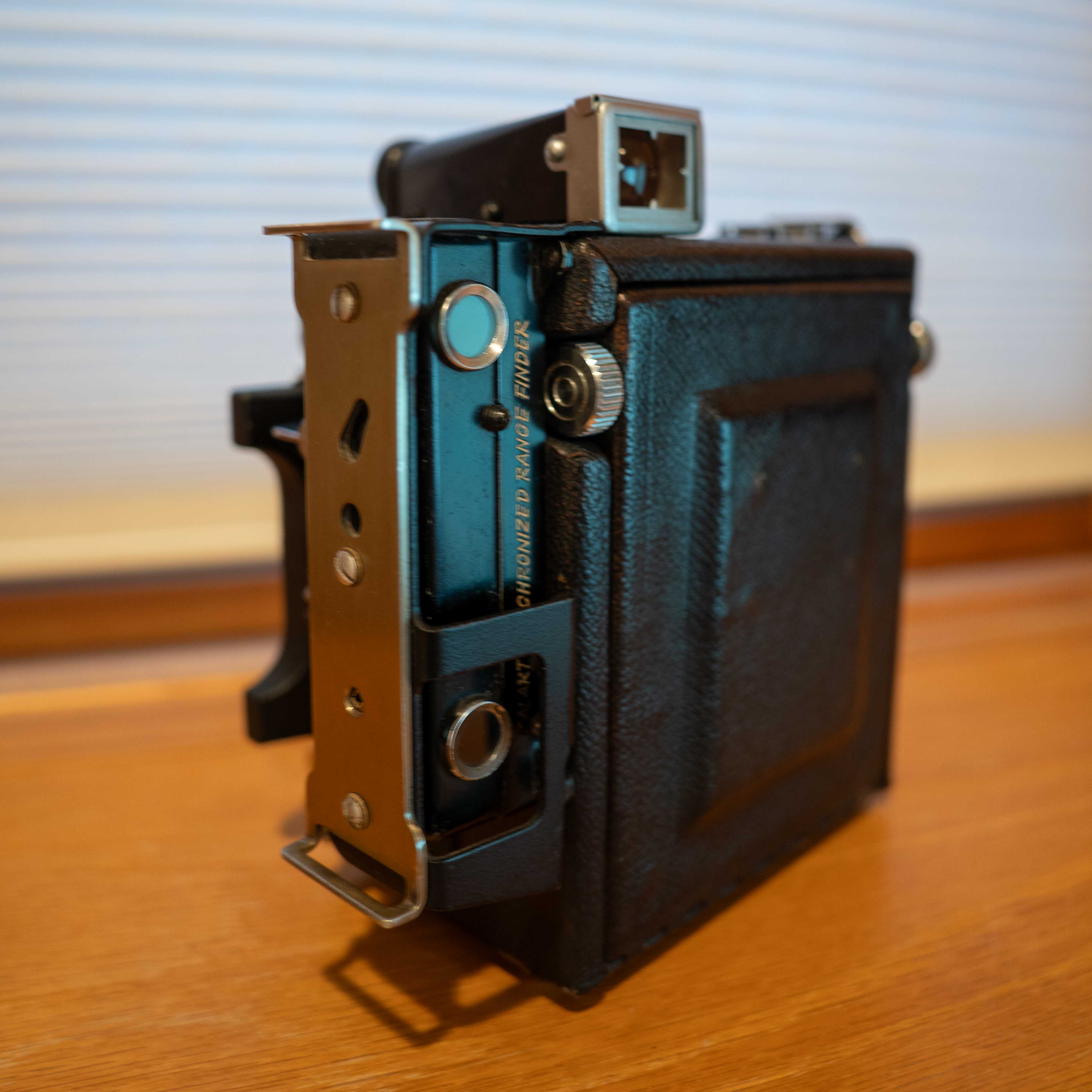
Graflex Speed Graphic

This is Dan Sr.'s old Speed Graphic camera
It is my first press camera, and here's the process of restoring, researching, learning about it.
Initial questions:
- What is it?
- When was it made?
- How do you use it?
Leaf Shutter
Initial examination of the camera reveals that just like my Yashica TLR,
it has a leaf shutter in the lens.
Additional functions seem to be:
B, allows you to open the shutter for as long as you hold down the trigger, the shutter then closes when you release the trigger.
T, opens up the shutter when you trigger it once and holds the shutter open until you trigger it a second time.
Viewfinder and Focal Plane Shutter

The viewfinder pops open upon clicking the silver button below it.
It opens and closes in a satisfying, origami like fashion.
...but no image... let me try to open up the leaf shutter... hmmm, still no image...
Found a knob on the side of the camera that rotates a cloth with different cut outs

Turning the knob until it says O, reveals the front lens. O must stand for Open.
When I have the knob set to O and the leaf shutter open, the viewfinder reveals an image!
Some research reveals this as a focal plane shutter.
Press cameras can sometimes have both a focal plane shutter and a leaf shutter, which aligns with the behavior of need to open two things to get an image on the viewfinder.
Film Back
Looks like the film back takes
120mm film.
Referred to as 2x3 format (although not exactly 2in by 3in).
Film back has a stop to prevent premature film exposure.
Film back and viewfinder cannot be used at the same time.
This film back is called Graflok, making it removable, and not require film sheets.
Lens
Information about this camera seem to be sparse. Additionally, the camera does not contain
a specific model number on the camera body, making it harder to research than usual.
Discovered graflex.org, it states that the serial number of the lens can help identify the production year of the lens and thus the camera as well. And from production year, we can narrow down the camera model.
Kodak Ektar lens of this period used an unique shorthand to mark their serial numbers:
| C | A | M | E | R | O | S | I | T | Y |
| 1 | 2 | 3 | 4 | 5 | 6 | 7 | 8 | 9 | 0 |

Looking at the len's the serial number, EO2856, we deduce that it is produced in 1946.
Making possible models of the camera: Miniature Speed Graphic and Anniversary Speed Graphic.
Camera Body

With the help of Reddit, I found the camera serial number inside the top fo the camera body, 371525, but could also be 871525.
Cross referencing this with Bruce Thomas' website, which lists known serial numbers and models, 371525 is in the range of Miniatures and 871525 is in the range of Crowns.
Distilling the different data points:
- Miniature and Anniversary were produced in 1946, which aligns with lens serial number
- Camera body serial number points to Miniature or Crown
- Finding out that they never made a 2x3 version of the Anniversary
Other Things I Learned:
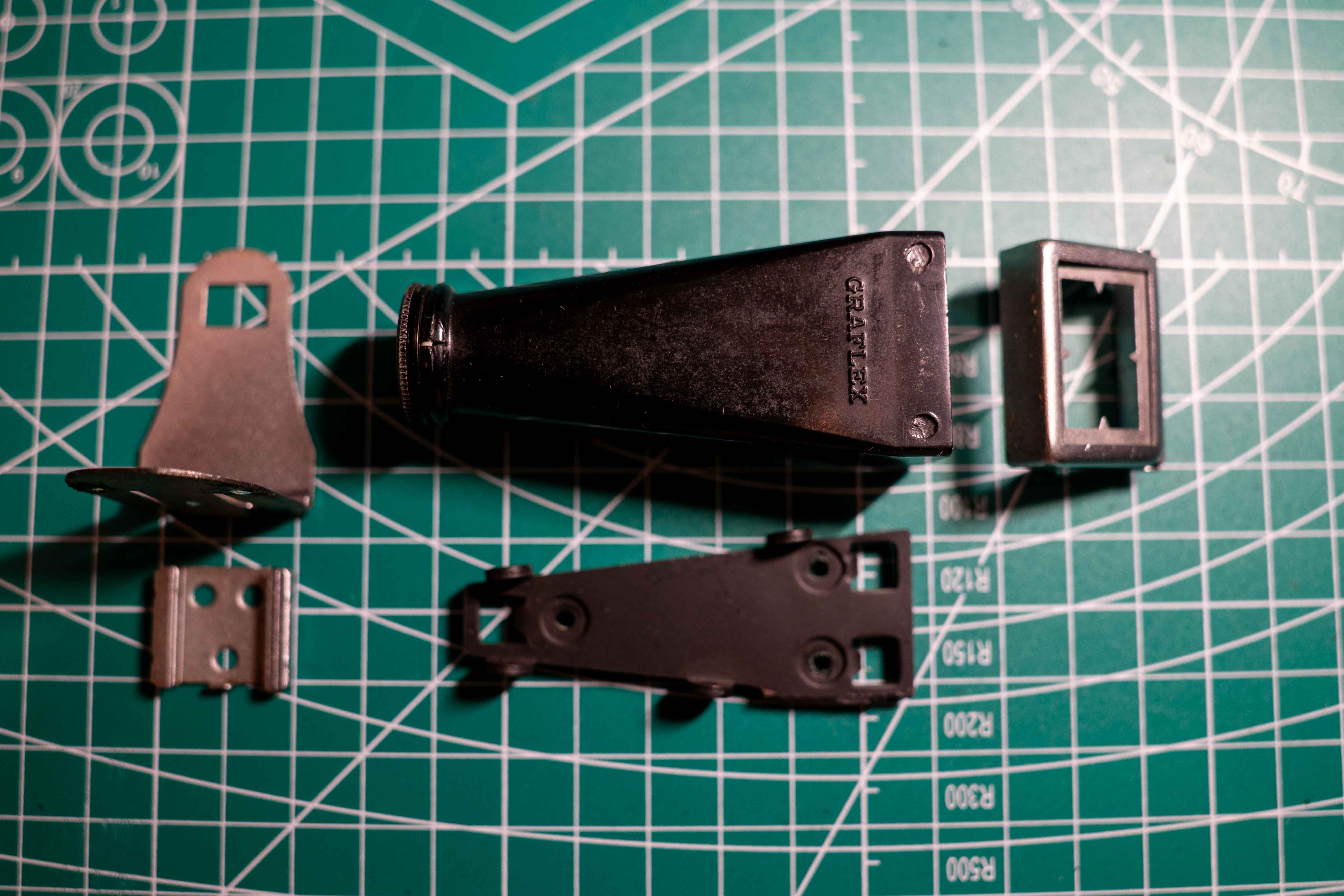
Here are some intersting things I found during the restoring and cleaning process
A lot of the parts seem to be made of copper, and there were mixed metal usage in the construction of the camera, which explains all the rusting.
Looks like 1946 engineering also took the philosophy of, "Screw too long, nothing a rotary tool can't fix" (see right most screw).
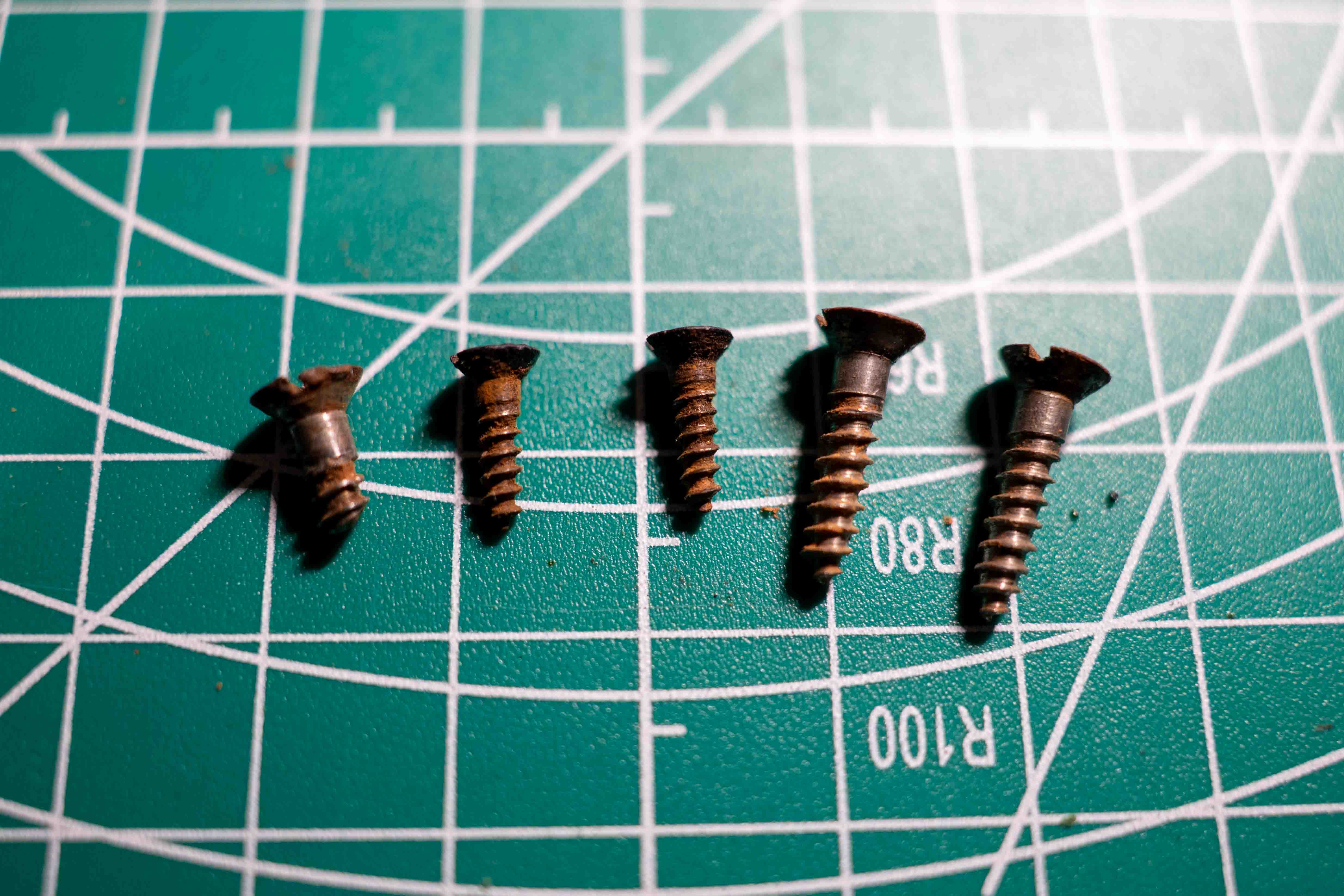
I suspect, the viewfinder is too wide compared to what part of the film is actually exposed, so Dan Sr. put up some tape to help with framing.

I removed it though, the tape, marker, and maybe adhesive seemed to have dried up and is peeling off.
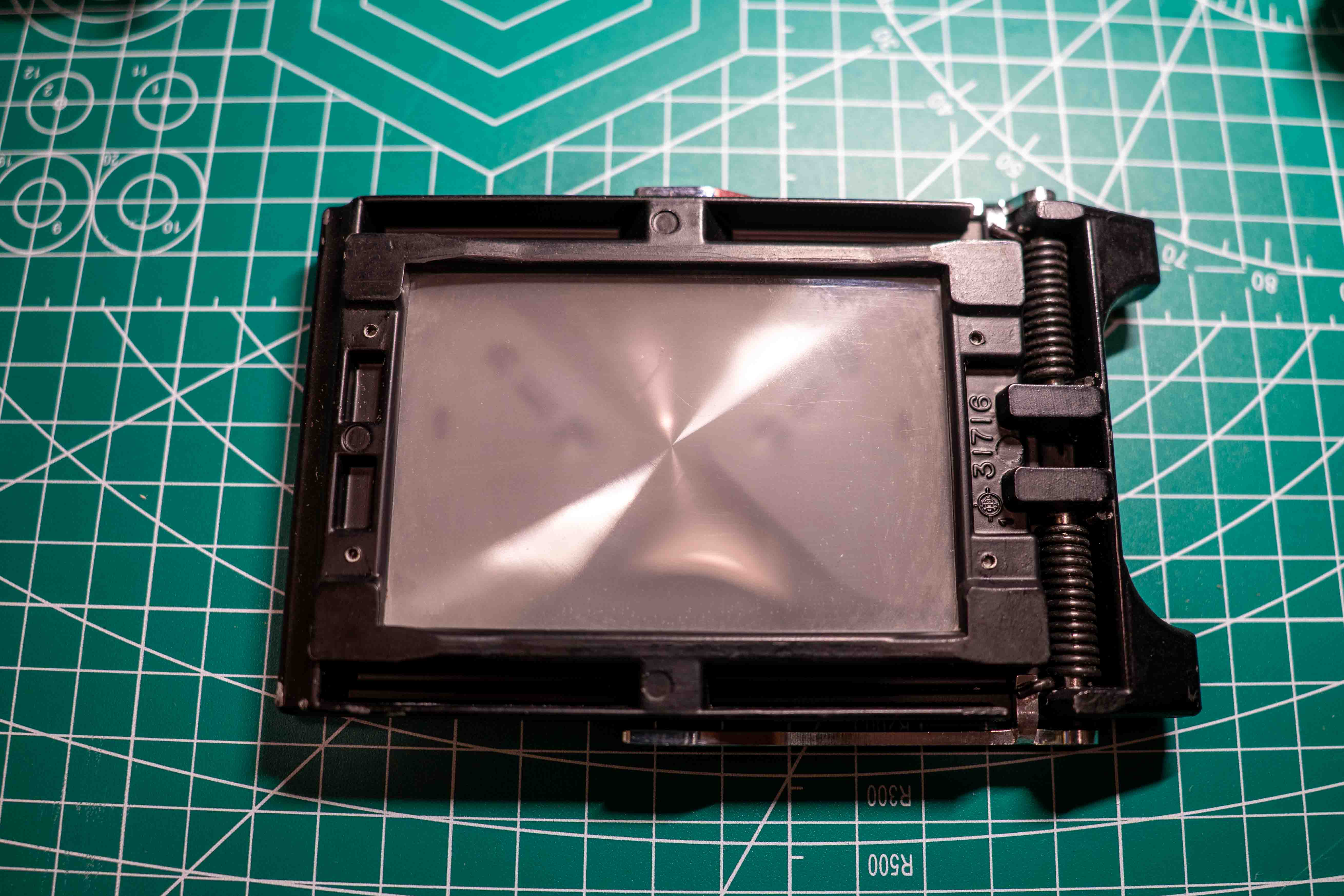
I might decide to put some more framing lines back later, but problem for another day.
The flash sync is a simple continuity mechanism.
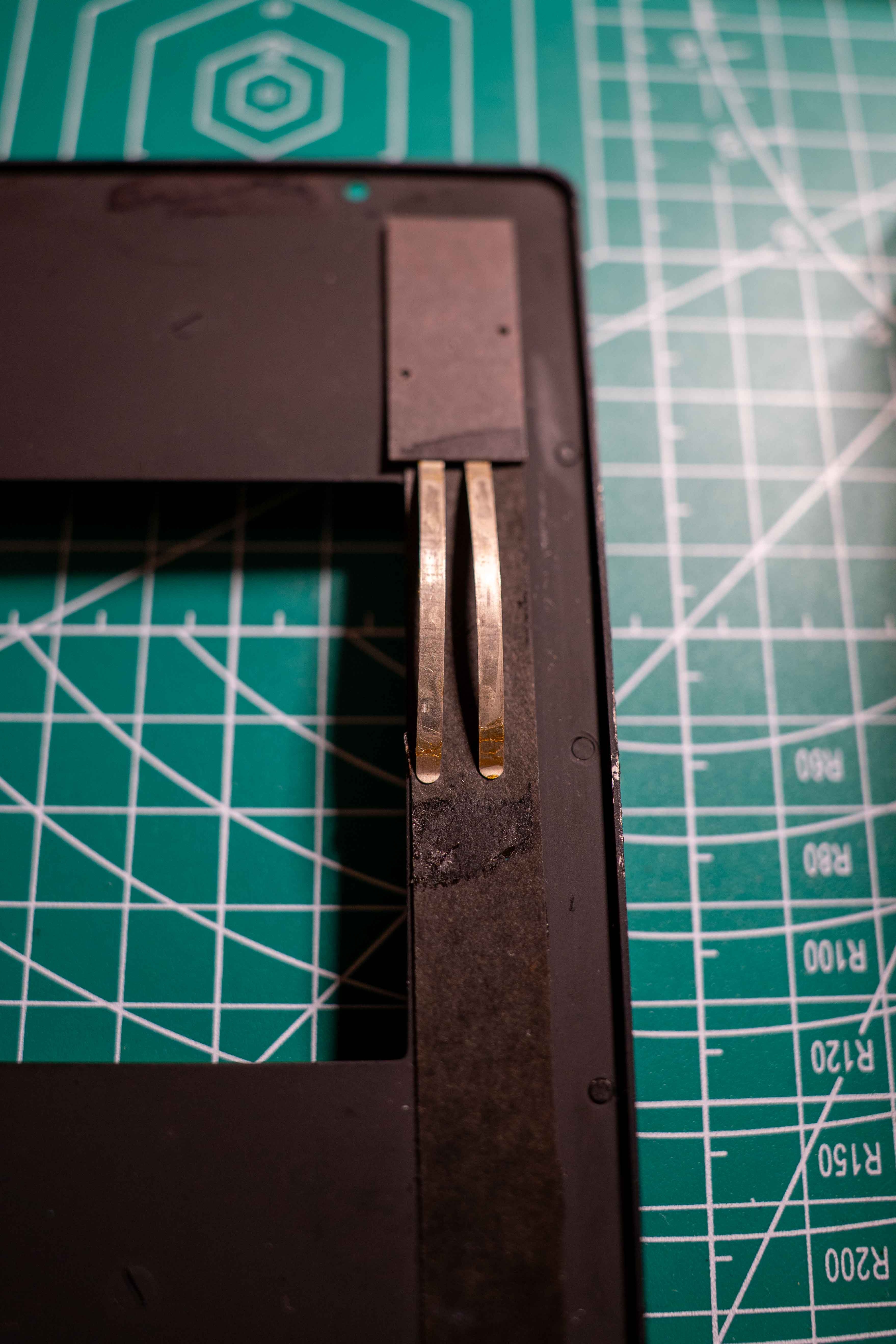
|
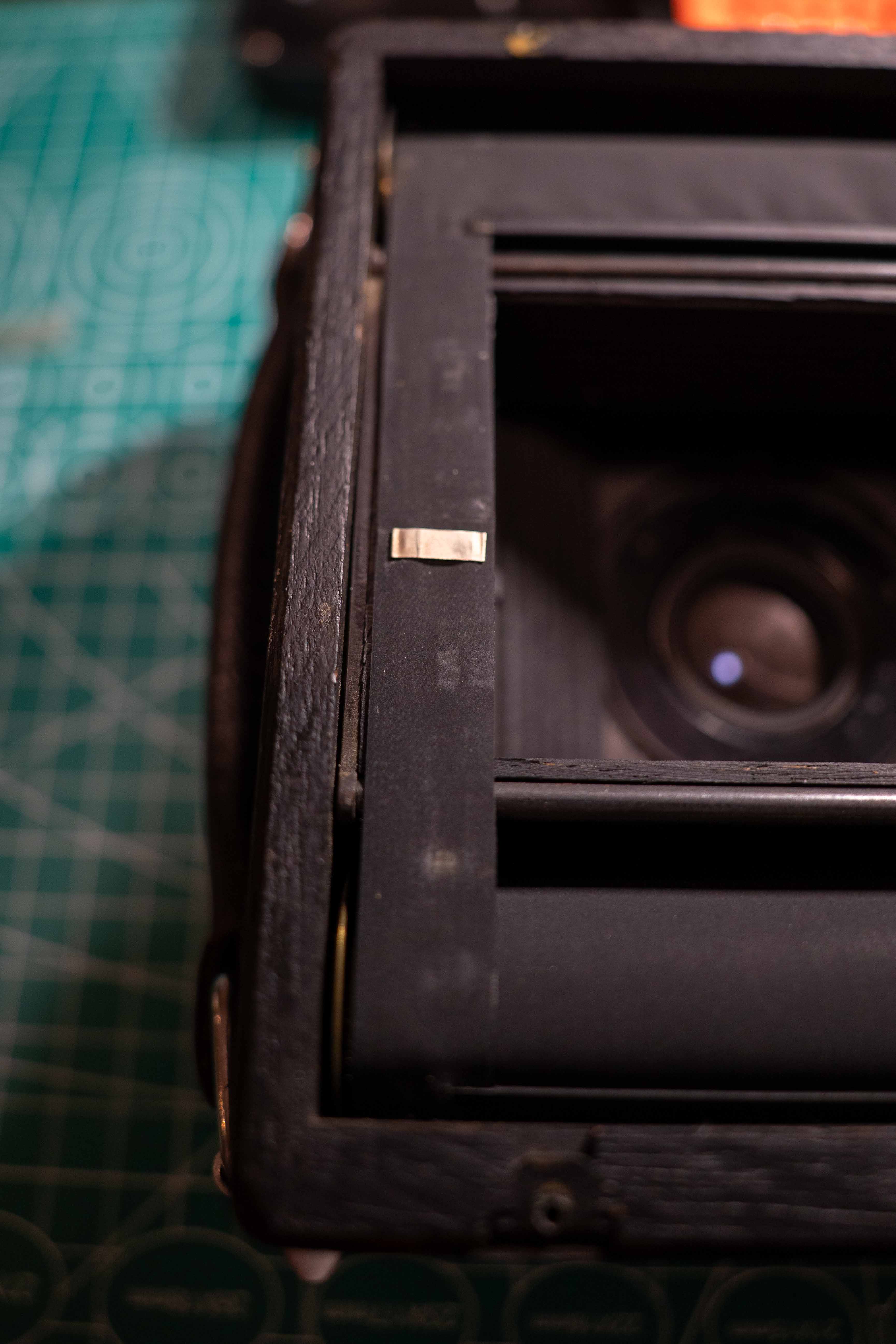
|
Some of the leather is peeling off, so some contact leather glue was needed to restore the exterior. Additionally, some oil goes a long way for 80 year old leather.
I also took the chance to make some minor modifications:
- I taped a tiny piece of felt to the horseshoe, since I noticed it being a bit looser than standard.
- I also loosened the clip that holds the front panel, so it's a bit easier to open and close the camera.